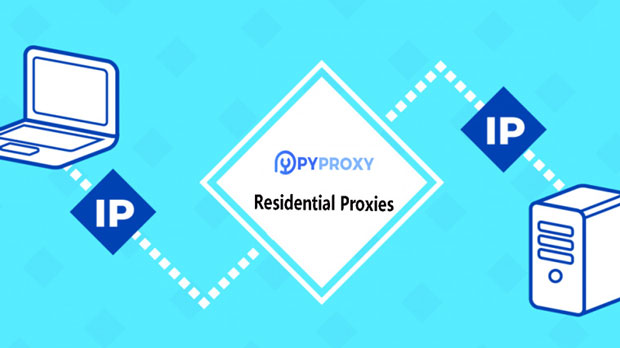Can Free Proxy IP SOCKS5 be used for e-commerce platform price monitoring?
The rapid growth of e-commerce has made price monitoring a crucial task for businesses to remain competitive in a fast-paced market. Price tracking allows companies to adjust their strategies based on the pricing activities of competitors. One popular method to accomplish this task is by using proxies. socks5 proxies, in particular, offer an appealing solution for maintaining anonymity and bypassing geo-restrictions. However, the question arises: can free SOCKS5 proxies be effectively used for e-commerce price monitoring? In this article, we will analyze the pros and cons of using free SOCKS5 proxies for such purposes, while considering the security, reliability, and efficiency aspects. Understanding SOCKS5 Proxies and Their Use in E-commerce Price MonitoringSOCKS5 proxies are a type of internet protocol that routes your connection through a remote server, making it appear as though your request is coming from a different IP address. This is especially beneficial for activities like price monitoring where anonymity is important, and users want to avoid detection or geographical limitations imposed by websites. SOCKS5 proxies provide an added level of versatility by supporting any type of internet traffic, including HTTP, HTTPS, FTP, and others.For e-commerce businesses, price monitoring often involves scraping competitor websites to analyze product prices and track changes in real-time. The data gathered can then be used to adjust pricing strategies, enhance product positioning, or optimize inventory management. However, in order to perform these tasks without facing blocks or CAPTCHA challenges, proxies are frequently utilized.The Appeal of Free SOCKS5 ProxiesFree SOCKS5 proxies seem like a tempting solution for businesses that need to track prices on multiple platforms without incurring significant costs. The primary appeal of free proxies lies in their no-cost feature, making them especially attractive for startups, small businesses, or individuals with limited budgets. However, the question remains whether these proxies are reliable enough for business-critical tasks like price monitoring.Advantages of Free SOCKS5 Proxies for Price Monitoring1. Cost-Effective Solution for Small-Scale Monitoring One of the most obvious benefits of using free SOCKS5 proxies is that they are, well, free. For small-scale operations or businesses just starting out, using free proxies can provide an entry point into price monitoring without requiring a significant upfront investment. This makes it possible to gather pricing data from competitors without needing to invest heavily in paid proxy services.2. Anonymity and Geo-Location Flexibility Free SOCKS5 proxies provide a certain level of anonymity, which is crucial for preventing e-commerce websites from detecting and blocking scrapers. This also allows businesses to simulate browsing from different geographical locations, which can be useful when monitoring prices across regions or countries. Certain products may be priced differently depending on the location, and free proxies can help emulate that.3. Scalability for Basic Use Cases While free proxies may have limitations in terms of speed and stability, they can still be useful for basic price monitoring tasks with lower volumes of requests. Small businesses or independent sellers may find that free SOCKS5 proxies are sufficient for monitoring a few competitors or checking prices on an infrequent basis.Challenges and Risks of Using Free SOCKS5 Proxies for Price MonitoringWhile free SOCKS5 proxies do offer certain advantages, they come with several inherent drawbacks that could severely impact the efficiency of price monitoring efforts.1. Reliability and Speed Issues One of the primary challenges of using free SOCKS5 proxies is the inconsistency in service. Free proxies often suffer from downtime, slow connection speeds, and high latency, which can result in failed requests or delays in retrieving the latest price information. This can be especially problematic for businesses that require real-time data to make timely pricing decisions.2. Risk of IP Bans and Blocking E-commerce platforms often deploy advanced anti-bot measures to prevent price scraping, such as CAPTCHA challenges, rate-limiting, and IP bans. Free SOCKS5 proxies are more likely to be flagged or blacklisted due to their use by multiple users, making it difficult to maintain consistent access to competitor websites. This can lead to disruptions in monitoring and an incomplete understanding of competitor pricing trends.3. Security and Privacy Concerns Free proxies often come with significant security risks. Many free socks5 proxy providers do not encrypt traffic, which means sensitive data such as login credentials, payment information, or business strategies could be exposed to malicious actors. Additionally, some free proxy services may log your activities or inject ads, which can compromise privacy. For e-commerce businesses handling sensitive customer data, using free proxies is a risky proposition.4. Limited Support and Maintenance Free SOCKS5 proxies typically lack customer support or maintenance, meaning that any issues encountered—such as connectivity failures, security breaches, or IP blocking—must be resolved by the user. This lack of support can be particularly problematic for businesses that need consistent performance for critical tasks like price monitoring.When Should Free SOCKS5 Proxies Be Used for Price Monitoring?Despite the numerous challenges, free SOCKS5 proxies can still be effective for certain types of price monitoring. For example, businesses with limited price monitoring needs, small-scale operations, or those testing the waters may benefit from using free proxies as a cost-effective starting point. Free proxies are suitable for non-intensive tasks where high speed, reliability, or security are not paramount concerns.Additionally, if the scope of price monitoring is limited to a small number of products or competitors, free SOCKS5 proxies could be sufficient, provided that the business is prepared for potential downtimes or interruptions in service.When Should Paid Proxies Be Considered for Price Monitoring?For businesses engaged in high-volume or real-time price monitoring, or for those that rely on the accuracy of their pricing strategy for competitive advantage, it is advisable to invest in paid proxies. Paid SOCKS5 proxies are generally more reliable, faster, and secure than free proxies, and they offer more consistent performance with better anonymity. Paid solutions also provide customer support, ensuring that businesses can resolve issues quickly and continue monitoring without disruptions.Conclusion: Weighing the Pros and Cons of Free SOCKS5 Proxies for Price MonitoringIn conclusion, free SOCKS5 proxies can be a viable option for certain e-commerce price monitoring tasks, particularly for businesses with limited resources or those just starting out. However, they come with significant drawbacks, including reliability issues, security concerns, and the risk of being blocked or blacklisted by target websites. For businesses that rely heavily on accurate and timely pricing information, investing in a more reliable and secure solution is likely to provide a better return on investment in the long run.Ultimately, whether free SOCKS5 proxies are a suitable choice for your e-commerce price monitoring needs depends on the scale, complexity, and importance of the task at hand. Businesses should carefully evaluate their requirements and be aware of the potential risks involved when using free proxies for critical activities.
2025-01-07

























































